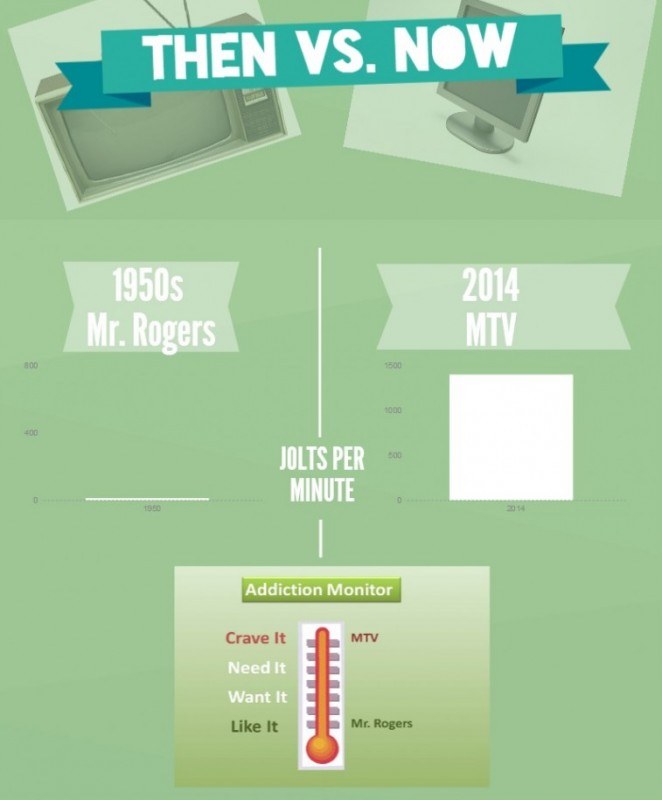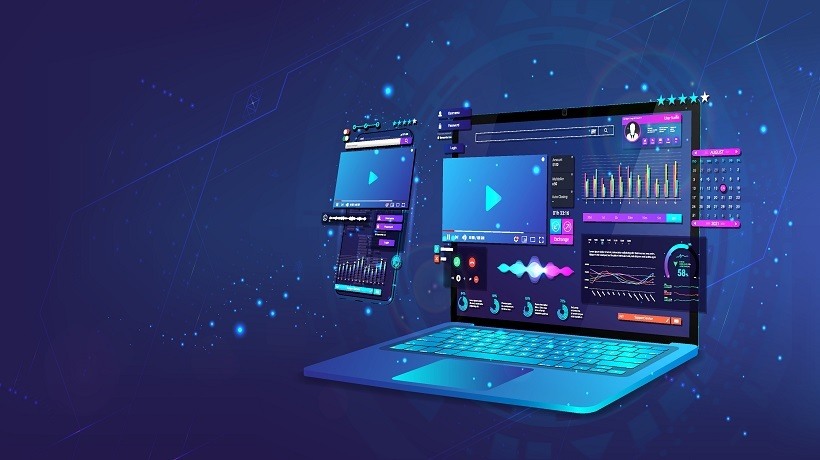We’re all on crack.
No, we’re all not walking around smoking cocaine. But we are all dopamine junkies and our modern-day “crack” is information. Specifically: digital information.
Don’t believe me? When was the last time you went to do a quick Google search on a particular topic and an hour later found yourself reading about something completely different from the original subject matter of your search because you kept linking to different sites? Or, you planned to just check in on Facebook for a few minutes before bed and two hours later you were finally powering down your computer? Or, you just couldn’t stop scanning your Twitter feed?
I thought so.
Spending time on the interwebs is addictive. (Sigh.) Imagine how much people could learn if only online courses could be that addictive. But wait…they can be addictive!
The dopamine loop - the key to making eLearning content addictive and getting learners to crave your content
It’s been widely held in scientific circles that dopamine regulates pleasure. But recent research finds that’s not true. Researchers now say dopamine neurotransmitters regulate motivation to continue pursuing a goal—not pleasure once we have achieved a goal. In short, we’re primordially programmed to be hunters. And we love a good Internet hunt.
So, how does that play into making a Google search addictive? It has to do with the so-called dopamine loop. When you seek information on Google (or LinkedIn, Twitter or Facebook, for that matter) the dopamine neurotransmitters in your brain get excited and make you want to continue the search. Then, you find the information you were looking for (in most cases rather quickly.) Score! The pleasure center (the opioid system) lights up and makes you feel good and that, in turn, makes you want to search again for something else. This thrill-of-the-hunt-pleasure-of-the-reward cycle continues. And that’s how a five-minute Google search can turn into an hour-long cycle of hunting for information, finding it, and hunting again by clicking on other links.
That same dopamine loop can also be activated in the brains of people taking online courses if we create an environment where the learner can experience these same hunting-and-finding / exploratory addictive loops.
Make your eLearning content addictive with these 4 dopamine triggers
The dopamine neurotransmitters are triggered by four specific circumstances. To make your eLearning addictive, add some – or all – of these dopamine triggers to your eLearning content.
1. Include the thrill of the hunt.
Rather than designing a typical eLearning course that has standard “next” and “back” navigation, structure the program as more of an exploratory course. Don’t structure the course in a linear manner, or use standard interactions such as drag-and-drop, tabbed interactions, or matching exercises. Don’t tell learners the information; make them find it through exploration of a problem.
Present a problem for the learners to solve—one where they need to “hunt” through various parts of a simulated environment to find the solution(s). Gamification is also a perfect way to make your course light up the dopamine neurotransmitters through “the thrill of the hunt.”
2. Give the brain regular jolts.
In the film industry, there’s a well-known audience retention technique called “jolts per minute,” which is the number of times the action changes—either by sight or sound—in a TV show or movie. These jolts could be laughter, violent moves, comical moves, quick camera angle changes, changes in music tracks or visuals, and so on. (I was astounded last weekend when I closed my eyes and merely listened to a movie that I had seen previously. In the span of one minute of dialogue, the musical sound track under the dialog had changed twelve times—either in volume, tempo, or a complete change of musical score—and there were nine different additional, albeit subtle, sound effects in that same time! If I had been watching the visual part of the movie, I would have noticed many visual jolts in addition to the audio jolts.)
But exactly how do these “jolts” that movie and television producers use keep people interested in the shows? Dopamine is stimulated by surprises and unpredictability; those jolts provide the surprises that the dopamine neurotransmitters crave. And our neurotransmitters need more jolts to keep our attention than they did in the past. Consider: The 1950’s Mr. Rogers show contained an average of five to 15 jolts per minute; today, a typical MTV presentation has a minimum of a dozen jolts per second! Anything less is considered boring by media producers. In his book, Critical Perspectives on ADHD, Thomas Armstrong points out that we are addicted because we have short attention spans, and we have short attention spans because we are addicted to these constant jolts.
Whatever your opinions may be about our attention-span-of-a-gnat society, the reality is that our learners do have much shorter attention spans. And it’s our job as instructional designers to create learning that will increase retention and comprehension by accommodating these shorter attention spans.

From jolts per minute to jolts per second: How content in 2014 is 60 times more addictive than content in the 1950s.
One way to do that is to follow the lead of film producers and include elements of the unexpected – jolting changes in audio or visuals -- in our courses. Those “jolts” could be something as simple as frequent video cuts, changes in audio, a scene change, a change in camera angle, animation or an unexpected sound effect. If you include gamification, then a surprise challenge or a sudden change in the rules will trigger a dopamine high. (Sort of like on Cutthroat Kitchen when they introduce a new curve ball every few minutes to which the chefs have to adapt.) Another method is design each module with a completely different look and feel.
By the same token, eliminating repetitive static elements – like company logos and copyright statements on every screen – can increase attention. When all the screens contain the same static elements, learners tune out the content on the rest of the screen—even if the other content on the screen contains jolts. Think of repetitive logos and copyright info as anti-jolts; instead of emotional “uppers,” they’re mind-numbing “downers.”
I’m not suggesting we resort to dizzying MTV-like jolts per second. After all, if we have too many jolts then the dopamine loop is opened too often, which leads to hyperactive updating of memory and results in little or no learning. On the other hand, if the loop is not opened often enough, memory is not updated when it should be, and learning doesn’t take place. Much of our eLearning today mirrors the mind-numbingly slow (by today’s standards) jolts per minute of a Mr. Rogers show, and that pace is simply out of sync with our learners’ attention spans.
3. Put a little Pavlovian puppy in your program.
It’s almost hilarious to watch people in stores when their cell phones ring, or when they hear their text message alerts sound. Many frantically reach for their pocket or purse and grab their smartphone like a ravenously hungry dog lunging for raw steak. But that’s how we’re all programmed. (And as much as we may not like to admit it, we’ve all done that ‘dog-after-a-raw-steak’ move a time or two with our smartphones.)
Dopamine is sensitive to both auditory and visual cues to rewards. (Remember Pavlov’s dog?) So when it comes to designing your eLearning, build in auditory cues to let learners know there is a reward coming. The cue could be a “ding” sound effect when points are earned from solving a problem or answering a quiz question correctly, or an alert every time learners complete any task. (I use a To-Do list program called Wunderlist, and I love the sound alert each time I cross an item off my digital list. I feel so motivated to complete the next item on the list just so I can hear that sound again—letting me know that I am being productive! Those auditory cues are powerful [addictive?] motivators and many app developers use them to keep us motivated—and keep us using their apps!)
One final point on visual and auditory cues: If your course contains gamificaiton, be sure to include sound effects whenever a learner moves up the leaderboard, achieves an award, or earns points.
4. Present a learning byte appetizer--not a main course.
The brain prefers tantalizing educational appetizers to satiating full course meals. Small bits of information that leave us hungry for more information sends the dopamine system into overdrive. It makes us want more. It makes people want to take the next module, learning byte or educational challenge.
Of course, there are other ways to make your eLearning addictive, including the use of compelling stories or on-camera talent to create a relationship with the online learner—both of which activate the limbic system of the brain which is also key to creating addictive content. But as far as dopamine is concerned, these four triggers will help to make learners crave your content.
Who knew? Learning can be addictive—even in corporate environments where attention spans are particularly short.
What do you think of this? Will you include dopamine triggers in your eLearning content? Or, do you think the learner ultimately has the responsibility to motivate himself or herself to be engaged in the training? Let me know by posting your comments below.








